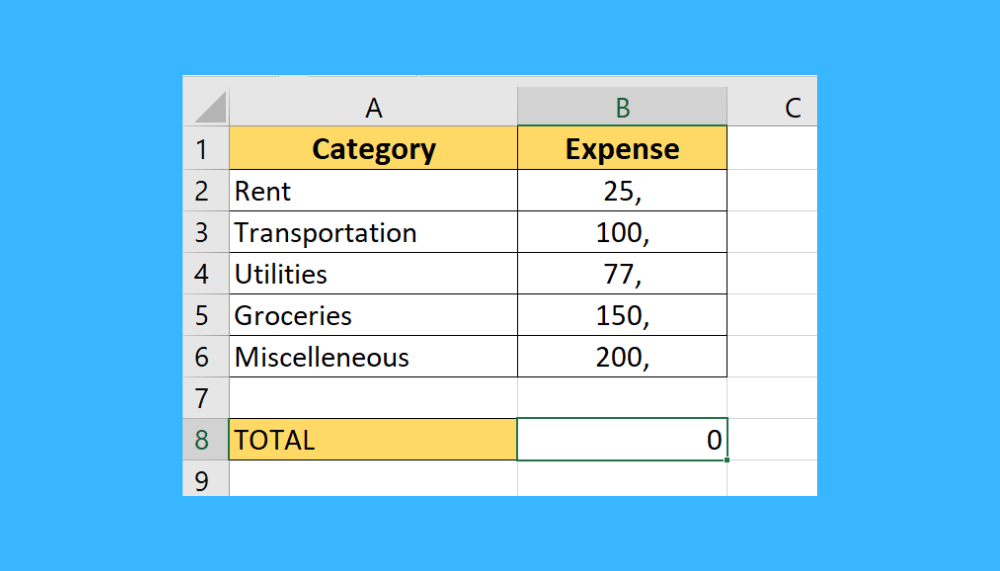1 Million Columns: Excel's Maximum Limit Revealed

When working with data in Microsoft Excel, one of the most common inquiries revolves around its limits, specifically the maximum number of columns you can use within a single spreadsheet. Excel, known for its robustness in data manipulation and analysis, does have defined boundaries. Understanding these limitations is not only crucial for effective data management but also for anticipating potential issues when scaling up data projects. Let's delve into Excel's column limits and explore how to work with or around these constraints.
Excel’s Column Limit: A Deep Dive

Excel, starting with version 2007, increased its spreadsheet capabilities significantly:
- Rows: Excel supports up to 1,048,576 rows, offering ample space for storing large datasets vertically.
- Columns: It provides 16,384 columns, which translates to 1 million columns, labeled from A to XFD. This is often where users hit the ceiling of Excel’s capacity.
📝 Note: While Excel’s column limit is vast, most business applications rarely require this many columns, making it a robust tool for the majority of data needs.
Strategies to Handle Large Datasets in Excel

Working with datasets that approach or exceed Excel’s column limits can be challenging. Here are some strategies:
1. Data Segmentation

- Split your data: Divide your dataset into multiple spreadsheets or workbooks if you have more than 16,384 columns.
- Use Master Sheet: Create a summary sheet that uses formulas or data connections to pull in data from various smaller, segmented spreadsheets.
2. Use External Databases

- Consider storing data in external databases like SQL Server, MySQL, or even cloud-based solutions like Google BigQuery.
- Power Query: Utilize Excel’s Power Query to connect to these databases, pulling in only the data you need, thus reducing the load on Excel.
3. Optimize Data Storage

- Normalize Data: Instead of having many columns for similar data, normalize your data to reduce redundancy and the number of columns needed.
- Use Advanced Features: Leverage Excel’s advanced features like Pivoting or Data Consolidation to analyze data without expanding columns indefinitely.
📝 Note: Excel 365 offers some benefits like larger grid sizes and performance improvements, but the column limit remains the same across versions.
Alternative Tools for Large Datasets

When Excel’s limitations become a bottleneck, consider alternatives:
1. Google Sheets

- Supports up to 18,278 columns, which can be more beneficial for wide datasets.
- Offers cloud collaboration, making it easier for team projects.
2. Power BI

- Designed for extensive data analysis, it doesn’t have the same column restrictions as Excel.
- Integrates well with Excel for importing data but allows for better visualization and analysis of large datasets.
3. Database Management Systems

- Traditional SQL databases or NoSQL solutions can handle datasets that far exceed Excel’s capabilities.
- Excel can connect to these systems for data retrieval and manipulation.
Understanding Excel's maximum column limit is essential for efficient data handling. While the limit itself may rarely be reached in typical business scenarios, having strategies in place to manage or bypass this limitation ensures smoother data workflows. The key is to adapt your approach to data management, whether by using Excel more efficiently or integrating it with other tools capable of handling larger datasets. This ensures that your data projects can scale effectively as they grow in complexity or volume.
As your datasets grow, these strategies will not only save time and effort but also help in maintaining data integrity and accessibility. So, even if Excel's column limit seems like a constraint, with the right approach, it can become an opportunity to refine and enhance your data management practices.
What happens if I exceed Excel’s column limit?

+
If you exceed the maximum number of columns in Excel, you won’t be able to enter or see any data beyond this limit in the current sheet. You’ll receive an error or warning, suggesting you consider using multiple sheets or external databases for your data.
Can I increase Excel’s column limit?

+
No, Excel’s column limit is a fixed constraint set by Microsoft. There are no settings or configurations within Excel itself to increase this limit.
How can I use Power Query to manage large datasets in Excel?

+
Power Query in Excel allows you to connect to external data sources like databases, web services, or even other Excel workbooks. You can import, transform, and merge data from these sources, then load only the required subset into your Excel sheet, thus managing large datasets efficiently.
What are some signs that I should switch to a different tool from Excel?

+
If your spreadsheets become unwieldy, performance issues like slow calculations, inability to save, or regular crashes, or if you find yourself frequently hitting Excel’s limitations, it might be time to consider alternative tools better suited for large data sets and complex analytics.
Is there a limit to how many spreadsheets I can create in a single workbook?
+Excel’s limit is 255 sheets in a single workbook. While this is substantial, it does mean you might need to consider external data solutions or segmentation strategies when working with large, multi-sheet workbooks.



